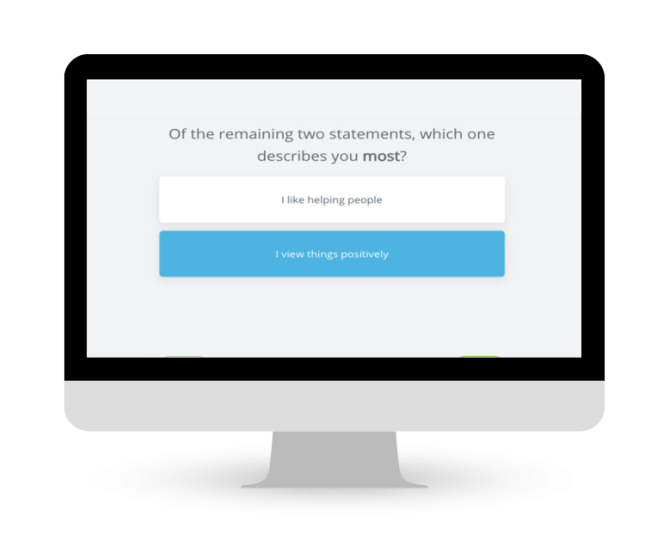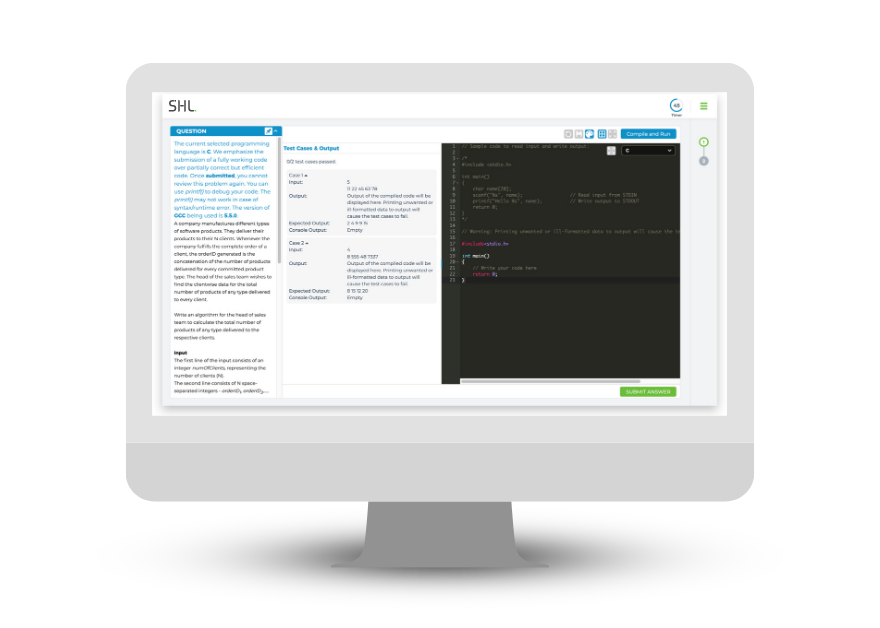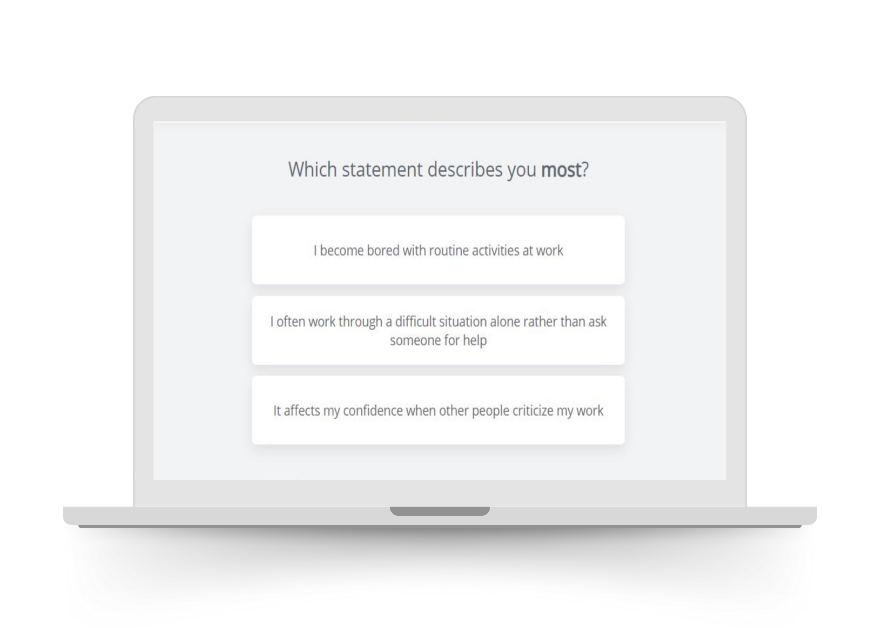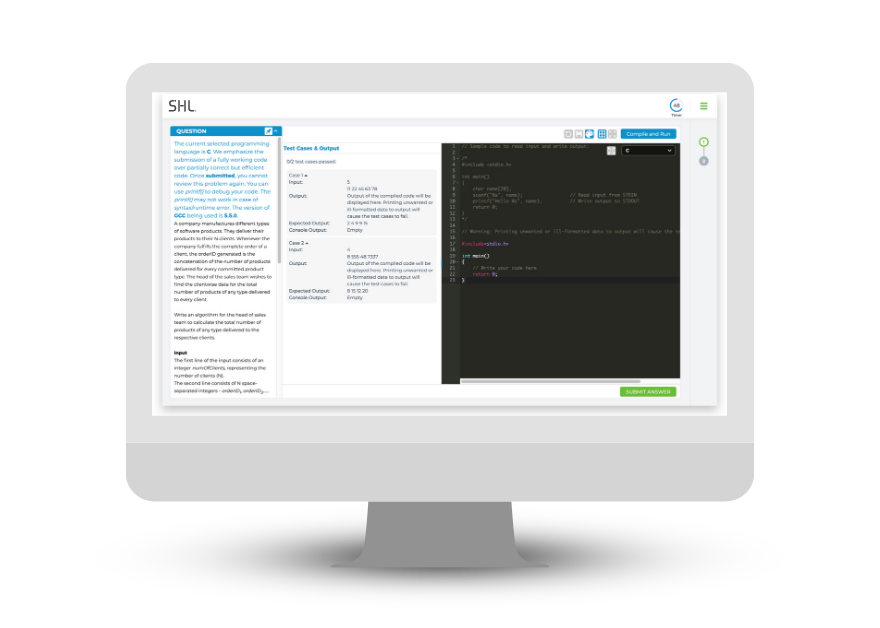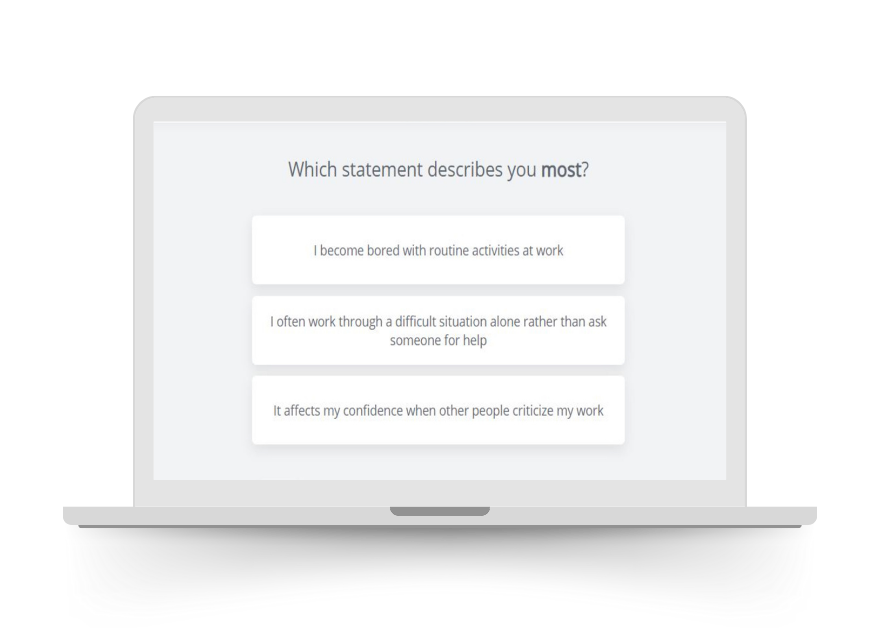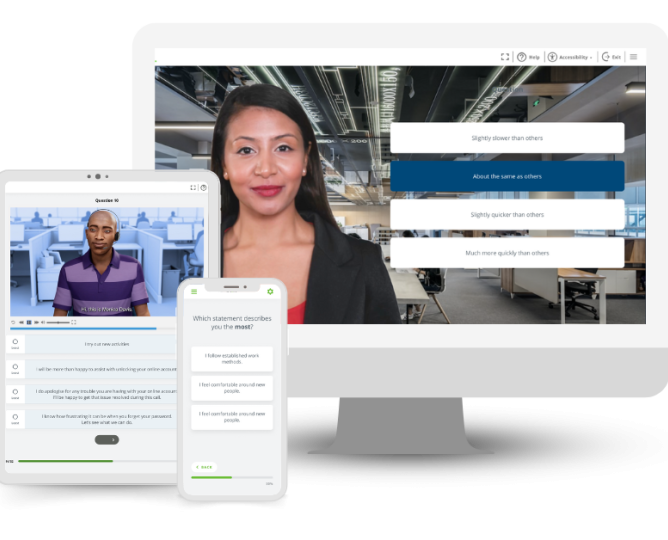These assess one’s ability to perform specific job-related tasks and duties. Examples of Skill or Knowledge-based tests include IT skills such as proficiency in specific coding languages or software, or perhaps administrative skills such as typing and data entry.
Psychometric Test Types
These measure how well a person will perform in a specific area in which they have no prior training or experience. Ability tests measure one’s general ability to learn, process information, and solve problems.
These assess personal behavioral preferences – how an individual likes to work. They are not concerned with abilities, but how an individual sees him or herself in the way they relate to others, their approach to problems, and how they deal with feelings and emotions.
Customers Testimonials
Frequently Asked Questions about Psychometric Tests
Roles from different levels, disciplines, and industries can be selected through psychometric testing because the purpose of this test is to provide measurable data of candidate competency and compatibility. Hence, any organizations that want to select candidates based on this data may use this testing.
Below are some examples where psychometric testing is used:
- University of Stellenbosch in South Africa uses SHL Assessments to help predict MBA students’ performance, with positive significant correlations found between students’ academic results and SHL assessment scores.
- Karcher uses SHL’s OPQ personality assessment, which is available in 20 languages across 48 countries, to manage talent more efficiently globally, resulting in more informed and fair decisions.
- Sunderland City Council uses SHL’s personality and ability tools to identify internal talents based on their personality, value, and aptitude. This helped to prevent mass redundancies in the organization and achieve cost reduction targets.
SHL’s data-driven people insights and an unmatched portfolio of products help companies to identify not only candidate skill, but also ability, personality, motivation, and job fit. By delivering engaging experiences built on science through global expert services, SHL provides one platform for all your people answers.
There is no one-size-fits-all psychometric test that is ”best”. There are many psychometric test types available in the market, such as aptitude tests, personality tests, skill-based assessments, and simulations. Organizations should evaluate the use of potential psychometric tests for the purpose in which they’ll be applied. It is important to understand the definition of the psychometric test and what it measures, along with the meaning of the score produced by the psychometric test.
Professional guidelines (e.g., Principles for the Validation and Use of Personnel Selection Procedures, 2003; Standards for Educational and Psychological Testing, 1999; International Guidelines for Testing, 2000) have established key standards to evaluate assessments, whether they are traditional multiple-choice knowledge tests or interactive, gamified judgment assessments. SHL psychometric tests are developed by highly trained measurement specialists to meet and exceed industry best practices.
Although there is no simple, formulaic approach for selecting the best assessment, the following criteria should always be evaluated in selecting the assessment tool most appropriate for a need:
- Reliability/Validity: Precision and stability of scores and extent to which scores are useful for predicting job-relevant outcomes
- Adverse Impact: Extent to which members of protected groups (e.g., minorities, women, those over 40) systematically score lower on the assessment than majority group members
- Cost-Benefit: Relative expense of developing, administering, and maintaining the assessment
- User Reactions and Perceptions: Extent to which candidates react positively to the assessment
These four major criteria are critical for ensuring that assessments are producing desirable results, minimizing legal risk, and ensuring a positive candidate experience. All criteria should be considered together when implementing assessments, and evidence supporting each criterion should be available or collected. The potential risks of ignoring this information are significant and may include negative impacts on employer brand, employment decisions based on inaccurate information, or claims of discrimination in a hiring program.
There are many options and methods to consider when determining how to best conduct a psychometric test. Initially, most psychometric testing was applied through paper-and-pencil assessment materials, delivered in-person by a representative of the hiring organization. However, over the past two decades, the field of psychometric testing has seen a shift in administration method due to the advent and widespread adoption of the internet. Organizations receive more applications for job opportunities than ever, and as a result, the identification of cost- and time-efficient processes to help determine top candidates for critical positions is of paramount importance.
Psychometric testing for pre-employment screening can effectively identify candidates who are well suited to positions, but recent economic conditions have forced organizations to slot testing earlier in the hiring process to help reduce the more time- and resource-intensive phases of hiring. As a result, unproctored Internet testing (UIT) has emerged as a mode of administration that brings multiple advantages to organizations, including decreased time-to-fill and recruitment costs.
Psychometric testing is often used within the recruitment process in order to help organizations select the right candidate for a job. Applied correctly, psychometric tests can add substantial value to an organization by ensuring new employees hired for a job have the right aptitude and competency profile for the role. When organizations spend the time and effort to make the right hire, they benefit through reduced turn-over which drives down overall costs that come with training and rehiring due to high levels of attrition.
The types of questions that are asked in a psychometric test vary depending on the psychometric test type and the measurement model that is applied within the test.
For example, for a numerical reasoning test, the test question might consist of a table or graph filled with numerical information, a question based on that information, followed by four or five response options from which the candidate would select the right answer. Alternatively, newer and more innovative psychometric tests of numerical reasoning, such as SHL’s Verify Interactive suite of cognitive assessments, instead use an interactive format in which candidates are still presented with numeric information but instead of being presented with multiple-choice options from which to select the right answer, the candidate might be asked to drag and drop responses within certain areas of the screen. By removing the multiple-choice response options, candidates can rely less on guessing or random chance to get the item correct, making these purer measures of a person’s ability.
Another common psychometric test is a work personality questionnaire. These types of tests are designed to measure individual differences on constructs related to one’s work styles and preferences. The questions on these types of tests vary in their presentation. In some work personality questionnaires, a single statement may be presented to the candidate (e.g., “I like meeting new people”) and the candidate is asked to rate the degree to which they agree with the statement (strongly disagree, disagree, unsure, agree, strongly agree). These types of personality tests are often considered as transparent and easy to fake. Alternatively, there are work personality questionnaires such as SHL’s Occupational Personality Questionnaire (OPQ) that utilize a forced-choice format. For the Occupational Personality Questionnaire, three equally desirable statements are displayed to the candidate. The candidate selects which of the three statements is most like them. Then from the remaining two statements, they again select which is most like them. This format is more sophisticated than the previously described method and is designed to reduce faking and bias in candidate responses through the lack of transparency on which statement among the three would be considered ”best”.
There are many psychometric test types available in the market, such as aptitude tests, work personality questionnaires, skill-based assessments, and simulations. SHL provides the opportunity to experience psychometric test examples and practice a variety of psychometric test types at our test preparation and career center.
The way people are selected for a job varies greatly from one employer to another and depends often on the requirements of the specific job role being hired. Psychometric tests are used to determine strengths and weaknesses and how they align with the requirements of the job. There is no blueprint to ensuring that an individual passes a given test. That said, there are actions that can be taken to optimize the chances of success. Before the test, you should:
- Make sure you understand what psychometric tests you will be taking and what they will tell the employer about your fit for the job.
- Prepare yourself using practice tests, if available. Familiarization with the different types of questions and timing of the tests can help you feel more relaxed in the real assessment situation, giving you a better opportunity to show your true ability.
- If you consider yourself as having a disability, make sure your recruiter is aware of it so he or she can discuss any possible adjustments to the psychometric tests with you. At SHL, our team is committed to supporting candidates with disabilities.
During the test, you should:
- Read through the instructions carefully and complete all practice and example questions.
- Don’t make assumptions about how you should respond. If you try to guess what the assessors are looking for, you may be wrong. It is best to be yourself and respond honestly.
SHL’s OPQ32 is a psychometric test based on an occupational model of personality, which describes 32 dimensions or scales of people’s preferred or typical style of behaving, thinking, and feeling at work. OPQ32 is designed to be an international model of personality, reflecting the changing nature of work at the beginning of the 21st century.
The OPQ32 model follows the general OPQ model of personality, which breaks personality down into three domains: Relationships with People, Thinking Styles, and Feelings, and Emotions. The three domains are joined by a potential fourth — the Dynamism domain — which is composed of scales such as Vigorous, Achieving, and Competitive that relate to sources of energy. The OPQ model of personality provides OPQ users with a clear framework for interpreting complex patterns of personality.
Explore SHL’s Wide Range of Solutions
With our platform of pre-configured talent acquisition and talent management solutions, maximize the potential of your company’s greatest asset—your people.
